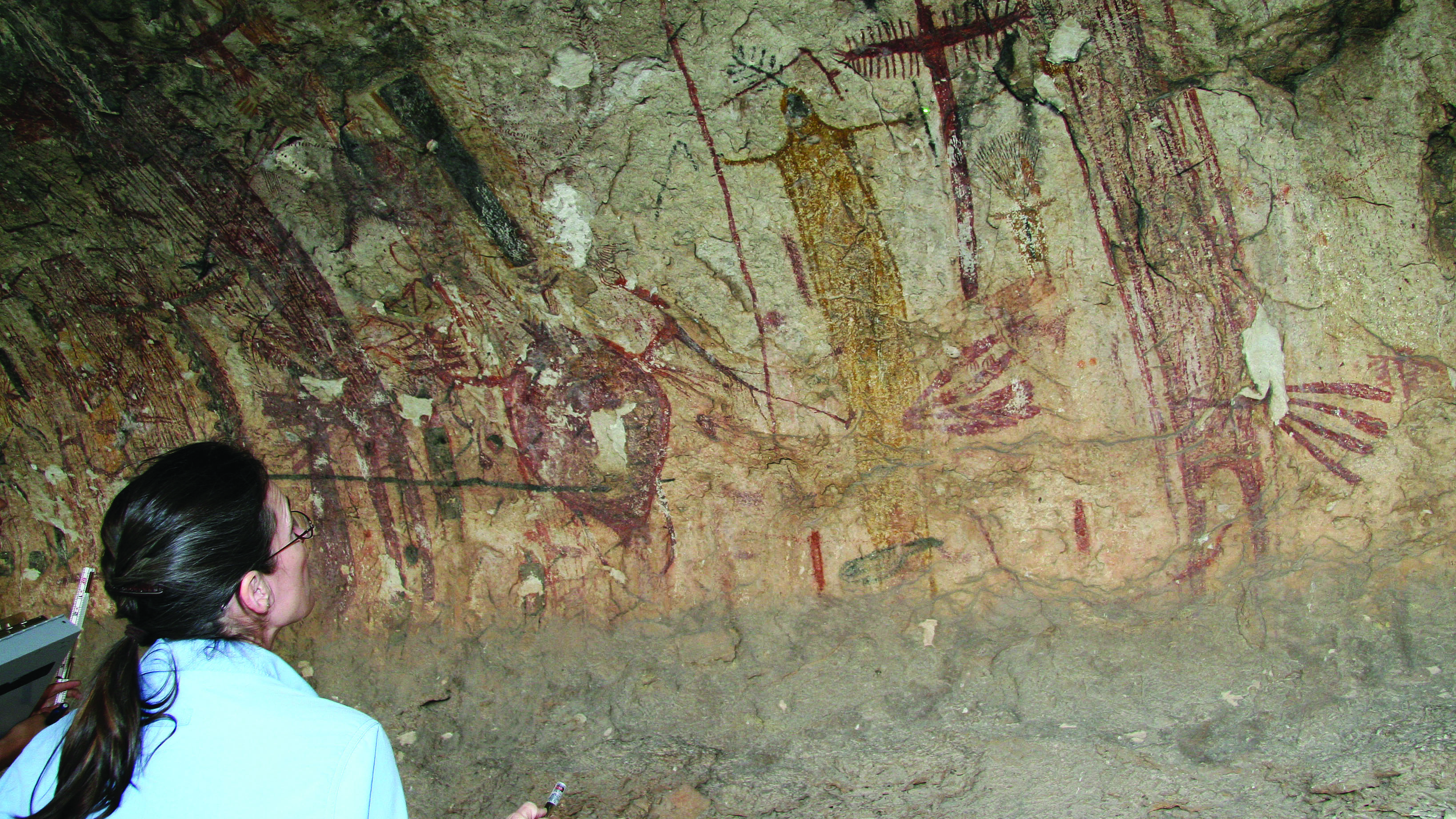Ancient rock art recently discovered in Pecos, Texas, matches similar findings further south in Mexico, establishing a regional continuity of culture in myths and traditions
After a five-year campaign, official recognition came on January 13, 2021, for hundreds of little-known and endangered rock art and wall carvings that adorn the canyonlands of the Pecos and Devils Rivers along the southwest Texas border. The Lower Pecos Canyonlands Archaeological District is now a National Historic Landmark. That status does not confer federal ownership or funding but does honor cultural significance. Using sophisticated mapping, imaging, and digitization methods, a team from Comstock, Texas-based Shumla Archaeological Research and Education Center documented at least 233 rock-shelter sites. Also recorded in a database dubbed the Alexandria Project is a vast pictorial library of the region’s rock art. Having gathered 36 terabytes of pictures, giga-panoramas, and 3-D modeling of the sites, the center is developing a digital platform that will allow access to the public and researchers.
Created between 1,500 and 4,500 years ago, the images resemble rock art found further south in Mexico, showing a regional continuity of culture in myths and traditions.
These depictions were first extensively documented in the 1930s on painted linens sized to scale by Dallas artists Forest and Lula Kirkland. To expand on that work, Texas State University archaeology professor Carolyn Boyd founded the Shumla center in 1998, and she has interpreted the extensive panels as cohesive murals. The White Shaman mural, for example, narrates a widely shared creation myth of early Uto-Aztecan speakers long extant in Mesoamerica. (shumla.org.)
This article was originally published in the August 2021 issue of American History. To subscribe, click here.





